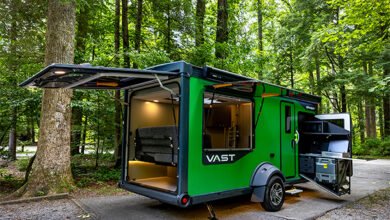The self loading concrete mixer: A Smart Investment for Modern-Day Construction

As construction projects continue to grow in scale and complexity, the demand for advanced, efficient, and time-saving equipment is higher than ever. Contractors, engineers, and builders are constantly seeking ways to streamline processes, reduce dependency on external suppliers, and maintain consistency in concrete production. A groundbreaking solution that addresses all these challenges is the self loading concrete mixer—an innovative, multi-functional machine that combines the operations of loading, mixing, transporting, and discharging concrete.
Compact yet powerful, this machine has become a preferred choice for small and medium-scale construction jobs, especially in remote areas or sites with limited access to infrastructure. Its ability to function independently without relying on batching plants or transport trucks makes it a reliable and cost-effective solution.
What is a self loading concrete mixer?
A self loading concrete mixer is an integrated mobile machine designed to produce concrete on-site. It is equipped with a rotating drum, a front-loading bucket, a water system, and an operator’s cabin—all mounted on a wheeled chassis.
The core advantage of a Self Loading Concrete Mixer is its versatility. It allows one operator to complete the entire concrete production cycle—from gathering raw materials to mixing and delivering the finished concrete. Whether working on a city street or a mountain road, this machine ensures fresh concrete delivery without any external support.
See also: The Small Business Guide to Promoting Products With Strong Visuals
Main Components of a self loading concrete mixer
To fully appreciate the functionality of a self loading concrete mixer, it helps to understand its key components:
- Hydraulic Loading Bucket: Used to scoop and load aggregates, sand, and cement into the mixing drum.
- Rotating Mixing Drum: Rotates to mix the materials into uniform concrete. Advanced models feature 270° to 360° rotational capabilities for directional discharge.
- Water Tank & Pump: Controls the water supply for the mix, ensuring precision and consistency.
- Operator Cabin: An enclosed and comfortable cabin that allows the operator to steer, monitor, and control all machine operations.
- Engine & Chassis: High-powered engines allow movement on tough terrains, while the chassis supports heavy-duty performance.
How It Enhances Construction Productivity
In modern construction, time and labor are valuable assets. The self loading concrete mixer offers various benefits that directly enhance productivity:
1. Integrated Mixing and Transport
Rather than transporting raw materials to a batch plant or waiting for a ready-mix truck, this machine allows on-site concrete preparation and delivery.
2. Reduced Manpower
One operator can manage the loading, mixing, and transport processes. This significantly reduces the number of workers required and lowers labor costs, especially in regions facing skilled labor shortages.
3. Time Efficiency
Traditional methods involve multiple steps and vehicles. The self loading concrete mixer compresses the entire process into one streamlined operation, reducing setup time, waiting periods, and concrete setting delays.
4. Quality Control
With the ability to monitor water levels, raw material input, and mix consistency on-site, builders gain better control over the quality of concrete. Adjustments can be made instantly to meet specific requirements without halting operations.
Cost-Effectiveness and Return on Investment
While the initial purchase of a self loading concrete mixer may seem like a large investment, it pays off quickly. Here’s why:
- Reduced Equipment Needs: Replaces multiple machines (loader, mixer, transporter).
- Lower Operational Costs: Minimal labor, fuel-efficient engines, and reduced material waste.
- Faster Project Completion: Leads to early handover and fewer delays.
- High Resale Value: These machines retain good value in the resale market due to strong demand and durability.
Contractors who invest in these mixers often see a return on investment within a few months, especially when used regularly across multiple projects.
Choosing the Right self loading concrete mixer
When selecting the best machine for your needs, consider the following factors:
- Drum Capacity: Common models range from 1.2m³ to 5.5m³. Choose based on your average daily concrete requirement.
- Terrain Suitability: If working on uneven or mountainous areas, opt for 4×4 models with off-road tires.
- Brand Reputation: Brands like Daswell, Fiori, Ajax, and Carmix are known for reliable models and good after-sales support.
- Spare Parts Availability: Choose a model with easily available parts to reduce downtime.
Safety and Training
Although easy to operate, safety is crucial. Operators should be trained to:
- Load materials without overfilling.
- Follow safe driving practices on job sites.
- Regularly maintain the engine, brakes, and hydraulic systems.
- Use protective gear and follow site safety protocols.
Manufacturers often provide operational training during the machine handover process to ensure safe and effective use.
Conclusion
The self loading concrete mixer is more than just another machine—it is a solution that addresses the real-time challenges of construction projects. By merging the functions of multiple machines into one powerful, mobile unit, it saves time, cuts costs, improves quality, and boosts efficiency.
Whether you are working in a congested city or a rural village, this machine brings concrete production directly to your site. For builders who prioritize speed, accuracy, and control, investing in a self loading concrete mixer is a wise move that delivers value project after project.




